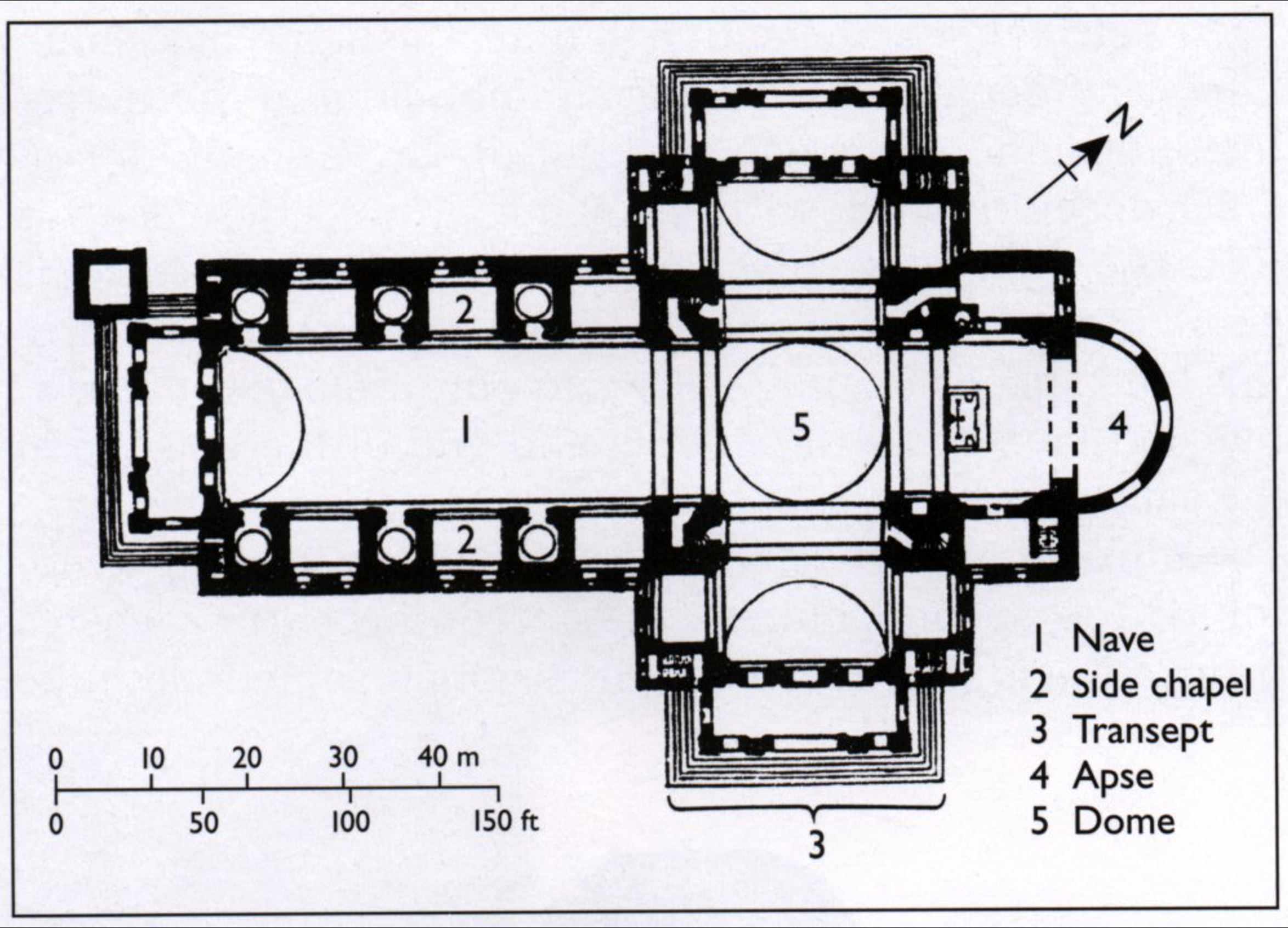Art History 1002 Exam 1 VOCAB
1/28
There's no tags or description
Looks like no tags are added yet.
Name | Mastery | Learn | Test | Matching | Spaced |
|---|
No study sessions yet.
29 Terms
Classical
Referring to the art and culture of ancient Greece and Rome, characterized by harmony, proportion, and an emphasis on humanism.
Column
an upright pillar, typically cylindrical and made of stone or concrete, supporting an entablature, arch, or other structure or standing alone as a monument.
Monastery
a building or buildings occupied by a community of monks living under religious vows.
Baptistery
the part of a church used for baptism.
Latin Cross plan
a floor plan for churches and cathedrals that resembles a Latin cross when viewed from above
Parts of a Church
Nave
Side Chapel
Transept
Apse
Dome

Patron
A person or a group that paid for the work of artists, writers and intellectuals
Memento Mori
(Remember you mist die) a cultural symbol that served as a reminder of death's inevitability
Cathedral
A large church that served as the seat of a bishop and the main church in a diocese
Coffer
A decorative sunken panel used in ceilings and vaults
Barrel vault
constructed with a rounded arched ceiling that gives the appearance of a tunnel.
Humanism
An intellectual movement that emphasized the value of the individual, the importance of education, and the ability of people to lead virtuous lives.
Linear Perspective
a mathematical technique that artists used to create the illusion of depth and space on a flat surface during the Renaissance.
Polychrome
practice of decorating architectural elements, sculpture, etc., in a variety of colors.
Proportion
the relationship between the different parts of a composition
Sfumato
A painting with no sharp lines or edges (lines are blurred)
Renaissance
Rebirth (the rebirth of ideas from ancient Greece and Rome)
Fresco (cycle)
Mixing pigment into plaster for a longer lasting effect
Colonnade
a series of columns that support a roof or building.
Renaissance Man
a person who is knowledgeable and proficient in many fields
Palazzo
a large, grand building in the Italian Renaissance style, often used as a residence for wealthy families, or for governmental or institutional purposes.
Relief
a sculptural technique that creates figures that project from a background, while still being attached to it.
Palette
a set of colors used by artists during the Renaissance period (14th–17th century).
Piazza
a public square or marketplace in an Italian city or town.
Loggia
a room, hall, gallery, or porch open to the air on one or more sides
Contrapposto
an artistic technique that depicts the human body in a dynamic pose with weight shifted to one side.
Pediment
a triangular gable that was used to decorate the top of buildings, especially entrances.
Secular Art
Not Christian art
Rotunda
building or room within a building that is circular or oval in plan and covered with a dome.